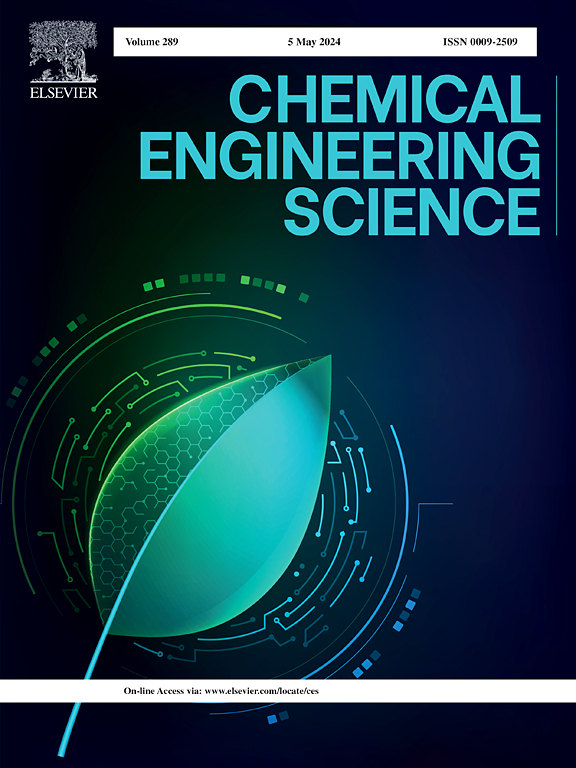Double-rebound behavior following immiscible droplet impact into a deep liquid pool
IF 4.1
2区 工程技术
Q2 ENGINEERING, CHEMICAL
引用次数: 0
Abstract
In the present study, we experimentally studied the double-rebound jet phenomenon, observed when a water droplet impacts an immiscible liquid (silicone oil, viscosity ≤ 20 cSt). Upon impact, a U-shaped cavity forms beneath the liquid surface, initiating the generation of two distinct jets. The cavity retracts to form a clotted Worthington jet, which is thick, slow-moving, and inhibited by the surrounding liquid, causing it to decelerate back into the pool. This process initiates the formation of a secondary V-shaped cavity, which collapses under capillary and inertial forces, creating a singularity at the base and driving the formation of the double-rebound jet. Unlike the singular jet, which forms from a single collapse, the double-rebound jet emerges sequentially after the Worthington jet, achieving speeds an order of magnitude greater than those of the initial droplet detachment and clotted jet evolution. Through a nondimensional analysis, the parameters influencing the double-rebound jet phenomenon and transitions from capillary-driven to inertia-dominated regimes were elucidated. A higher Froude number deepens the cavity and amplifies rebound jet dynamics, while high Capillary numbers emphasize viscous resistance that inhibits double-rebound jet formation. Surface tension stabilizes the gas–liquid interface, while dimensionless parameters govern double-rebound jet dynamics.
非混相液滴撞击深液池后的双回弹行为
在本研究中,我们实验研究了水滴撞击非混相液体(硅油,粘度 ≤ 20 cSt)时的双反弹射流现象。撞击后,在液体表面下形成一个u形空腔,开始产生两种不同的射流。空腔收缩形成一个凝结的沃辛顿射流,它很厚,移动缓慢,被周围的液体抑制,导致它减速回池。这一过程启动了二次v型空腔的形成,该空腔在毛细力和惯性力作用下坍塌,在底部形成奇点,并驱动双反弹射流的形成。与单次坍缩形成的单次射流不同,双反弹射流在沃辛顿射流之后依次出现,其速度比初始液滴分离和凝结射流演化的速度要快一个数量级。通过无因次分析,阐明了影响双反弹射流现象和由毛细管驱动向惯性主导转变的参数。较高的弗劳德数加深了空腔,放大了回弹射流动力学,而较高的毛细数强调了抑制双回弹射流形成的粘性阻力。表面张力稳定气液界面,而无量纲参数控制双反弹射流动力学。
本文章由计算机程序翻译,如有差异,请以英文原文为准。
求助全文
约1分钟内获得全文
求助全文
来源期刊

Chemical Engineering Science
工程技术-工程:化工
CiteScore
7.50
自引率
8.50%
发文量
1025
审稿时长
50 days
期刊介绍:
Chemical engineering enables the transformation of natural resources and energy into useful products for society. It draws on and applies natural sciences, mathematics and economics, and has developed fundamental engineering science that underpins the discipline.
Chemical Engineering Science (CES) has been publishing papers on the fundamentals of chemical engineering since 1951. CES is the platform where the most significant advances in the discipline have ever since been published. Chemical Engineering Science has accompanied and sustained chemical engineering through its development into the vibrant and broad scientific discipline it is today.
 求助内容:
求助内容: 应助结果提醒方式:
应助结果提醒方式:


